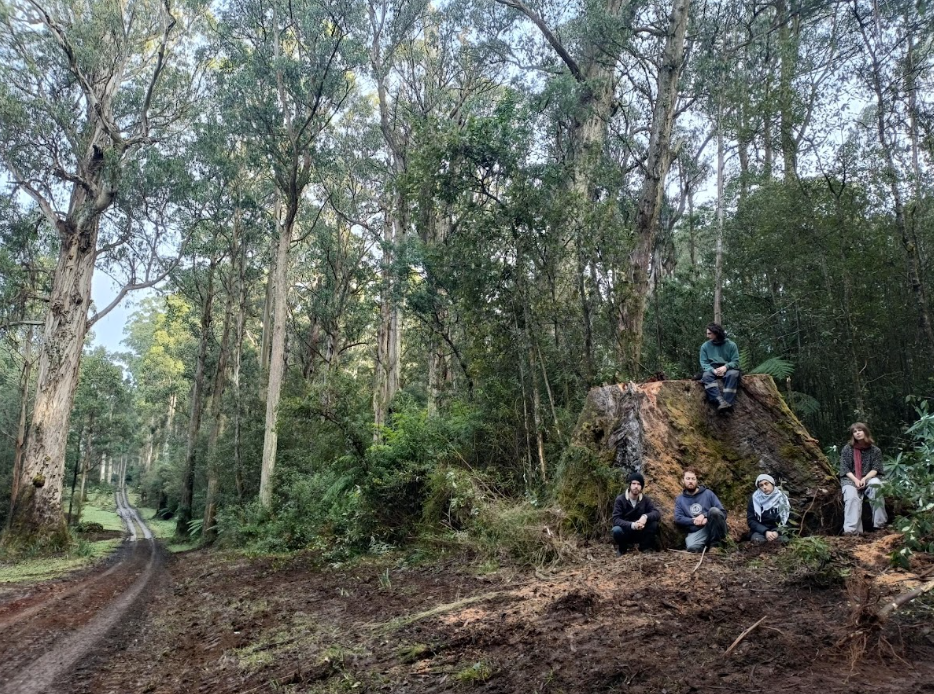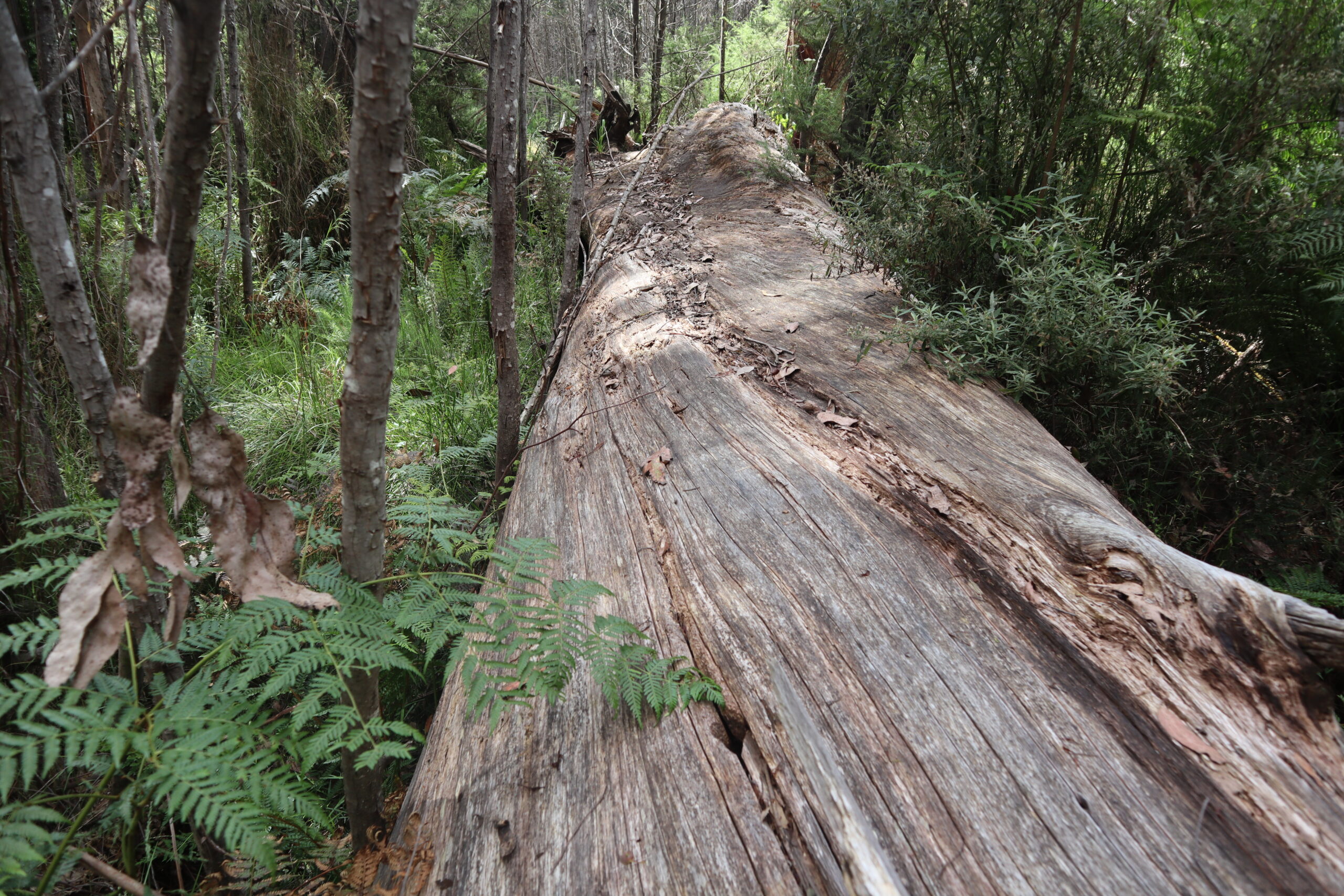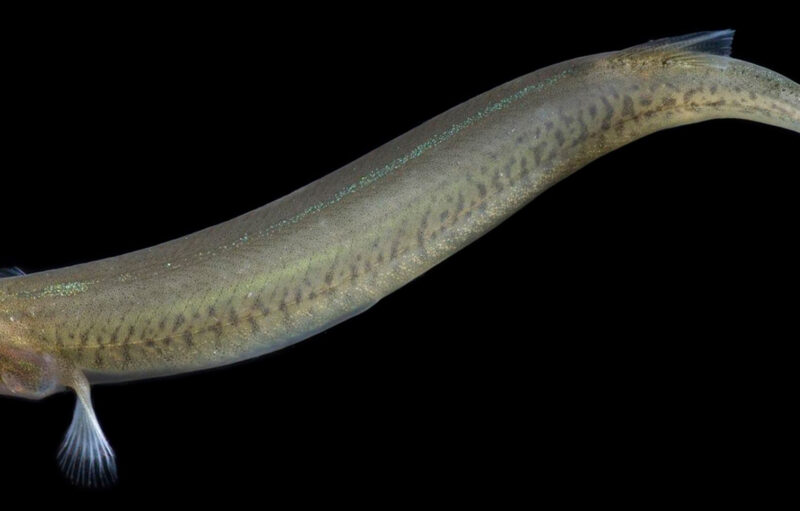BREAKING: On 24 May Forest Fire Management felled another grandmother tree. Even after they were supplied all the data confirming its habitat value
These rare trees are home to endangered wildlife like Leadbeater’s Possums, Greater Gliders and Gang-gang Cockatoos. They store carbon and clean our air. They’re part of a living web, under and above the soil.
Community groups have even found a dead Greater Glider in a tree felled by FFMV.
Over 100 more hollow-bearing trees are marked for the axe. It’s up to us to stop this. These habitat trees deserve to be protected.
Use the talking points below to call, comment on social or send a direct email now!
FEDERAL ENVIRONMENT MINISTER: TANYA PLIBERSEK
Phone: 02 6277 7920
Email: [email protected]
PREMIER OF VICTORIA: JACINTA ALLAN
Phone: 03 9651 5000
Email: [email protected]
Calling tips
• Introduce yourself, where you live and why you’re calling
• A staff member might pick up – request they pass your concerns on.
• For a confidence boost, write down a few notes and practice first.
• Add your own personal touches, stories and connections.
• Thank the staffer/minister for their time.
Send us a quick email to let us know how it went.
Talking points
Operation location: Forty Mile Break and Whitelaw Track, on the southern border of the Yarra Ranges National Park, north of Noojee.
Leadbeater’s Possums and Greater Gliders
- Citizen scientists recently found a dead Greater Glider in a felled tree that conservation groups had informed state and Commonwealth ministers had a glider living in it. Why was this allowed to happen?
- The Leadbeater’s Possum Recovery Plan states “The major threat to the Leadbeater’s possum is the ongoing reduction in the extent, quality and connectivity of suitable habitat (especially large or hollow-bearing trees)“.
- Logging operations in the Central Highlands appear in breach of the Recovery Plan (Action 2.9 that pledges to protect large and hollow-bearing trees for the possum).
- Many hollow-bearing trees (HBTs) have already been removed, with over 100 more HBTs marked for removal along the Forty Mile Break and Whitelaw Track.
- The Recovery Plan states “all current and prospective suitable habitat is critical for its survival, and necessary for its recovery” and that “habitat critical to the survival of the species should not be destroyed or modified“. Leadbeater’s have been recorded along this break as recently as three weeks ago, why is a government department destroying critical habitat?
- The Federal Government’s Greater Glider conservation advice states “In Victoria, loss of HBTs due to mechanical site preparation works associated with prescribed burning (which primarily occurs in foothill forests close to settled areas) may reduce suitable habitat for the greater glider (southern and central).
- Community groups have documented endangered Greater Gliders nesting in some of these trees earmarked for imminent removal. Why has the Victorian Government self-approved the culling of endangered wildlife?
- Greater Gliders and Leadbeater’s Possums are particularly sensitive to forest clearance – decline or loss of hollow-bearing trees reduces their presence in the landscape.
- It’s likely these operations will have significant negative impacts on the Leadbeater’s Possum and Greater Glider under the following criteria, a clear breach of the EPBC Act:
– lead to a long-term decrease in the size of a population
– reduce the area of occupancy of the species
– fragment an existing population into two or more populations
– adversely affect habitat critical to the survival of a species – disrupt the breeding cycle of a population.
– interfere with the recovery of the species
– modify, destroy, remove, isolate or decrease the availability or quality of habitat to the extent that the species is likely to decline.
Safety issues, nature laws and logging loopholes
-
- These logging operations appear inconsistent with the EPBC Act and the ‘significant impact criteria’ in place to protect threatened wildlife. Why hasn’t the Federal Environment Minister called for an assessment of potential significant impacts on threatened wildlife?
- Both state and federal governments are responsible for fulfilling the Leadbeater’s Possum Recovery Plan under s269 of our national nature laws (The EPBC Act 1999).
- An independent arborist assessed a sample of trees marked for removal and found that all warranted a high retention value, posed a broadly acceptable level of risk to human safety (one in a million) and should not be removed. This casts serious doubt in the assessment method used by Forest Fire Management and this senseless destruction.
- There is currently no transparency, oversight and regulation of Forest Fire Management operations here in Victoria. We cannot continue to let these departments mark their own homework. We need independent regulation and oversight to keep them in check with state and federal nature laws and best science.
- Why is the Victorian Government continuing to make-work for logging contractors at the expense of native forests? Government policy was to end native forest logging but there are many loopholes open. The state budget shows they are choosing to fund these logging loopholes, not close them.
- A factor making wildlife eligible for listing in the Endangered category is an overall rate of population decline exceeding 50 percent over a 21-year (three generation) period.



